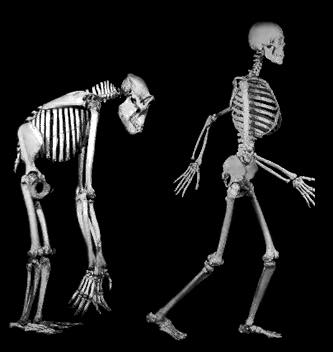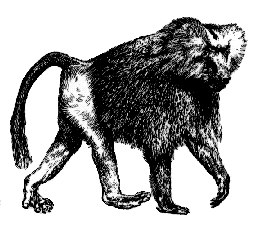
What type of locomotion is this
primate using?

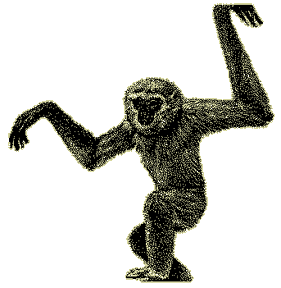
Proportions of arms and legs illustrate
the specialization for brachiation. Shoulder joints also allow for flexible
rotation of the shoulders and arms. A short body and legs make gibbons
relatively light weight.
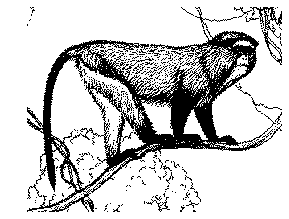
Walking on limbs creates a posture not too dissimilar
to that for walking on the ground. The length of the hind-limbs will reflect
the amount of running versus leaping that will be used.
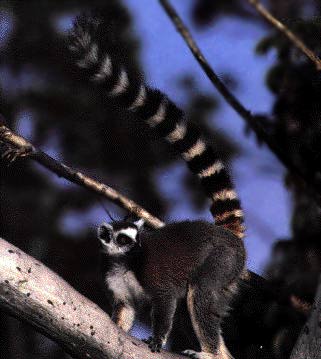
Some lemurs leap so often from limb to limb that there
hind-legs have become so long that they are uncomfortable walking on four-limbs.
This ringtail lemur does not have as long hind-limbs as a Shifaka lemur
who could not assume this posture.
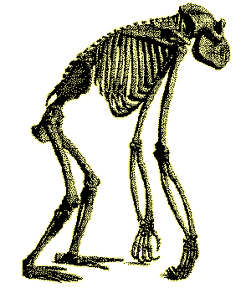
What type of locomotion best fits
this skeletal structure?
Here you can see the difference
between how a gorilla walks and how we do.